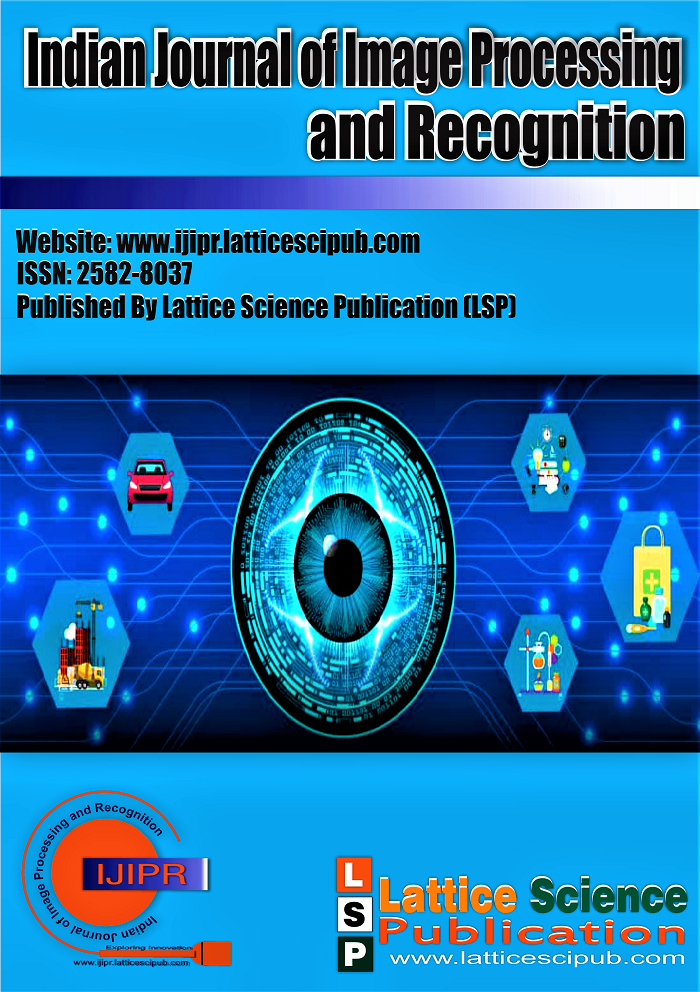Evaluating the Effectiveness of Camouflage Patterns in Arid Environments
Main Article Content
Abstract
This research systematically evaluates the effectiveness of 14 distinct camouflage patterns across various arid environments. The study employs a comprehensive quantitative measurement framework, integrating two advanced image processing techniques: Gabor filters and Local Binary Patterns (LBP). These techniques provide an objective analysis of camouflage concealment by assessing the patterns' ability to blend into a diverse range of arid environmental backdrops. The research emphasizes the structural and textural aspects of camouflage patterns while deliberately excluding the influence of color palettes to isolate the impact of design elements. Data is collected and analyzed to quantify the performance of each pattern under controlled conditions, ensuring consistent and replicable results. The findings offer valuable insights into optimizing camouflage design, with practical implications for enhancing concealment strategies in military operations and wildlife research. By focusing on pattern design alone, this study contributes to a more nuanced understanding of how texture and structure influence the effectiveness of visual camouflage in arid landscapes.
Downloads
Article Details

This work is licensed under a Creative Commons Attribution-NonCommercial-NoDerivatives 4.0 International License.
How to Cite
References
Cuthill, I.C., Stevens, M., Sheppard, J., Maddocks, T., Párraga, C.A. and Troscianko, T.S., 2005. Disruptive coloration and background pattern matching. Nature, 434(7029), pp.72-74. DOI: https://doi.org/10.1038/nature03312
Mäenpää, T. and Pietikäinen, M., 2005. Texture analysis with local binary patterns. In Handbook of pattern recognition and computer vision (pp. 197-216). DOI: https://doi.org/10.1142/9789812775320_0011
Stevens, M. and Merilaita, S. eds., 2011. Animal camouflage: mechanisms and function. Cambridge University Press. DOI: https://doi.org/10.1017/CBO9780511852053.001
Behrens, R.R., 2002. False colors: art, design and modern camouflage. Bobolink Books. https://scholarworks.uni.edu/facbook/430/
Mortlock, R.F., 2020. Camouflage Combat Uniform. Defense AR Journal, 27(4), pp.354-397. https://calhoun.nps.edu/bitstream/handle/10945/69407/Mortlock_camouflage%20combat.pdf?sequence=1
Denning, R.J., 2018. Camouflage fabrics. In Engineering of high-performance textiles (pp. 349-375). Woodhead Publishing. DOI: https://doi.org/10.1016/B978-0-08-101273-4.00016-0
Anitole, G. & Johnson, R.L., (1989). Evaluation of Desert Camouflage Uniforms by Ground Observers. U.S. Army Belvoir Research, Development and Engineering Center, Fort Belvoir. https://apps.dtic.mil/sti/tr/pdf/ADA289273.pdf
Dugas, A., Zupkofska, K.J., DiChiara, A., & Kramer, F.M. (2004). Universal camouflage for the future warrior. U.S. Army Research, Development and Engineering Command, Natick Soldier Center, Natick, MA. https://milspecmonkey.com/articles/acu/dugas.pdf
Scaturro, S., 2011. From combat to couture: Camouflage in fashion (Doctoral dissertation, Fashion Institute of Technology. Fashion and Textile Studies). DOI: http://dx.doi.org/10.13140/RG.2.2.36233.03682
King, A., 2014. The digital revolution: Camouflage in the twenty-first century. Millennium, 42(2), pp.397-424. DOI: https://doi.org/10.1177/0305829813512885
Mortlock, R.F., 2020. Camouflage Combat Uniform. Defense AR Journal, 27(4), pp.354-397. https://calhoun.nps.edu/bitstream/handle/10945/69407/Mortlock_camouflage%20combat.pdf?sequence=1
Langhorne, J.L., Martinez, O.A., &
Khilji, A., (2018). Standardized U.S.-led coalition forces uniform. Naval Postgraduate School, Monterey, California. https://apps.dtic.mil/sti/trecms/pdf/AD1059969.pdf
Gonzalez, R.C., 2009. Digital image processing. Pearson education india. https://dl.icdst.org/pdfs/files4/01c56e081202b62bd7d3b4f8545775fb.pdf
Jain, A.K. and Farrokhnia, F., 1991. Unsupervised texture segmentation using Gabor filters. Pattern recognition, 24(12), pp.1167-1186. DOI: https://doi.org/10.1016/0031-3203(91)90143-S
Mehrotra, R., Namuduri, K.R. and Ranganathan, N., 1992. Gabor filter-based edge detection. Pattern recognition, 25(12), pp.1479-1494. DOI: https://doi.org/10.1016/0031-3203(92)90121-X
Kamarainen, J.K., Kyrki, V. and Kalviainen, H., 2006. Invariance properties of Gabor filter-based features-overview and applications. IEEE Transactions on image processing, 15(5), pp.1088-1099. DOI: https://doi.org/10.1109/TIP.2005.864174
Lindahl, T., 2007. Study of local binary patterns. https://www.diva-portal.org/smash/get/diva2:23908/FULLTEXT01.pdf
Pietikäinen, M., Hadid, A., Zhao, G., Ahonen, T., Pietikäinen, M., Hadid, A., Zhao, G. and Ahonen, T., 2011. Local binary patterns for still images. Computer vision using local binary patterns, pp.13-47. DOI: https://doi.org/10.1007/978-0-85729-748-8
Merilaita, S. and Stevens, M., 2011. Crypsis through background matching. Animal camouflage: mechanisms and function, pp.17-33. DOI: https://doi.org/10.1017/CBO9780511852053.002
Thepade, S. D., Awhad, R., & Khandelwal, P. (2020). Image Retrieval with Fusion of T hepade’s Sorted B lock Truncation Codingnary based Colo r and Local Binary Pattern based Texture Features with Different Color Places. In International Journal of Innovative Technology and Exploring Engineering (Vol. 9, Issue 5, pp. 28–34). DOI: https://doi.org/10.35940/ijitee.e1963.039520
Tamilselvi, M., & Karthikeyan, S. (2019). A Face Recognition System Using Directional Binary Code Algorithm And Multi-Svm. In International Journal of Engineering and Advanced Technology (Vol. 8, Issue 6s3, pp. 1201–1208). DOI: https://doi.org/10.35940/ijeat.f1204.0986s319
Singh, A., & Jindal, K. (2019). Realization of Image Processing Algorithm based on FPGA. In International Journal of Recent Technology and Engineering (IJRTE) (Vol. 8, Issue 3, pp. 2882–2885). DOI: https://doi.org/10.35940/ijrte.c5338.098319
Dutta, D., Halder, T., Penchala, A., Krishna, K. V., Prashnath, G., & Chakravarty, D. (2024). A Case Study on Image Co-Registration of Hyper Spectral and Dual (L & S) Band SAR Data and Ore Findings Over Zewar Mines, India. In International Journal of Emerging Science and Engineering (Vol. 12, Issue 6, pp. 17–25). DOI: https://doi.org/10.35940/ijese.a8055.12060524
S, D., & P L, L. (2020). Binary Class Classification of Software Faults in Software Modules using Popular Machine Learning Techniques. In International Journal of Innovative Science and Modern Engineering (Vol. 6, Issue 6, pp. 14–18). DOI: https://doi.org/10.35940/ijisme.f1221.046620





